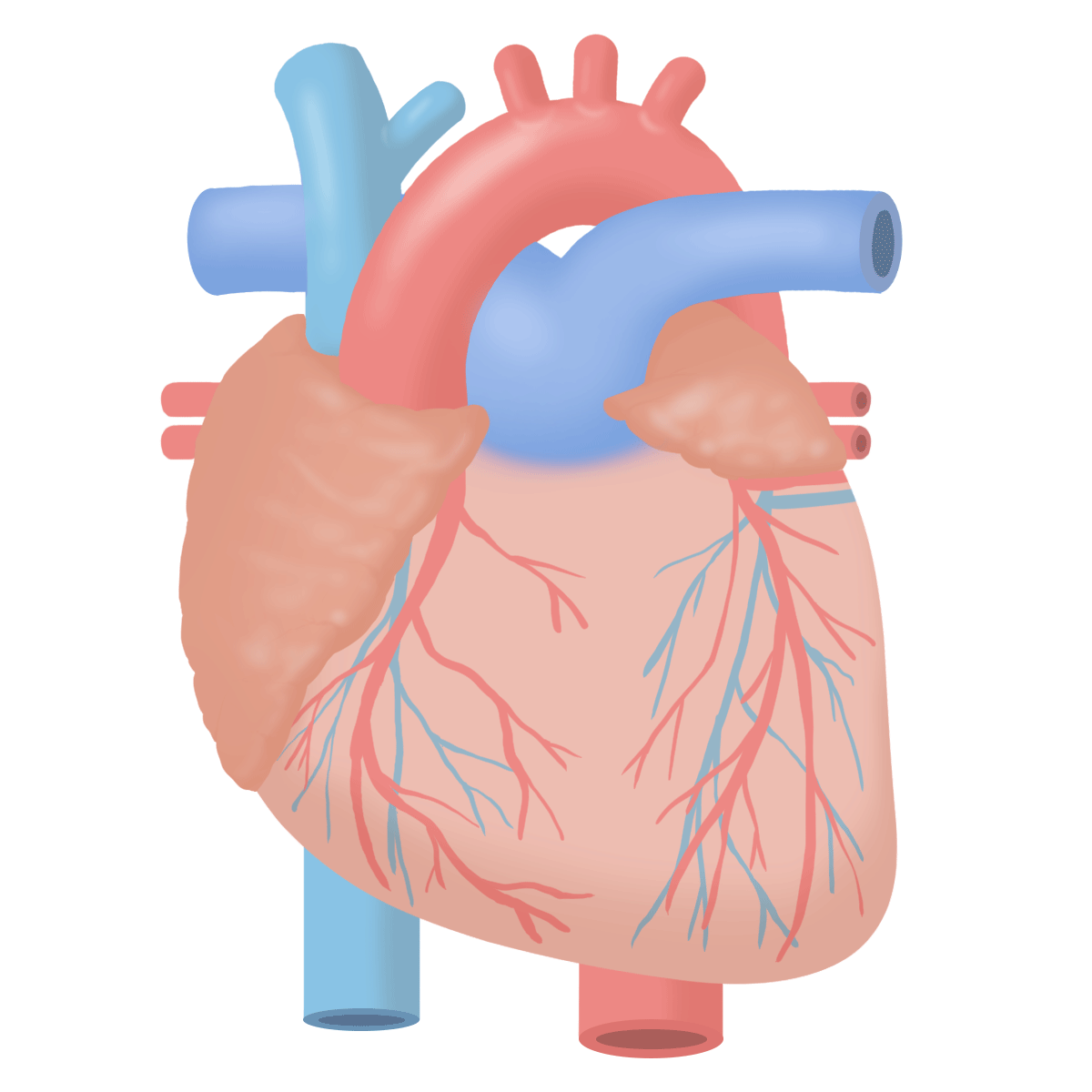Effect of Digoxin vs Bisoprolol for Heart Rate Control in Atrial Fibrillation on Patient-Reported Quality of Life: The RATE-AF Randomized Clinical Trial
JAMA. 2020 Dec 22;324(24):2497-2508.
https://pubmed.ncbi.nlm.nih.gov/33351042/
P:洞調律に復帰する見込みのないと定義された持続性心房細動と呼吸困難(NYHAⅡ以上)を有する60歳以上の患者(n=160)
E:ジゴキシン投与群(n=80;用量範囲、62.5~250μg/d;平均用量、161μg/d)
C:ビソプロロール投与群(n=80;用量範囲、1.25~15mg/d;平均用量、3.2mg/d)
O:SF-36 PCSを用いた6ヵ月後のQOL
ジゴキシン、ビソプロロールのどちらを選択したとしても、6ヶ月後のQOLには有意な差がないという結果になりました。あとは忍容性や、臨床的なその他の条件を考慮した上で選択することが望ましいということになりますね。
![]()
Importance: There is little evidence to support selection of heart rate control therapy in patients with permanent atrial fibrillation, in particular those with coexisting heart failure.
Objective: To compare low-dose digoxin with bisoprolol (a β-blocker).
Design, setting, and participants: Randomized, open-label, blinded end-point clinical trial including 160 patients aged 60 years or older with permanent atrial fibrillation (defined as no plan to restore sinus rhythm) and dyspnea classified as New York Heart Association class II or higher. Patients were recruited from 3 hospitals and primary care practices in England from 2016 through 2018; last follow-up occurred in October 2019.
Interventions: Digoxin (n = 80; dose range, 62.5-250 μg/d; mean dose, 161 μg/d) or bisoprolol (n = 80; dose range, 1.25-15 mg/d; mean dose, 3.2 mg/d).
Main outcomes and measures: The primary end point was patient-reported quality of life using the 36-Item Short Form Health Survey physical component summary score (SF-36 PCS) at 6 months (higher scores are better; range, 0-100), with a minimal clinically important difference of 0.5 SD. There were 17 secondary end points (including resting heart rate, modified European Heart Rhythm Association [EHRA] symptom classification, and N-terminal pro-brain natriuretic peptide [NT-proBNP] level) at 6 months, 20 end points at 12 months, and adverse event (AE) reporting.
Results: Among 160 patients (mean age, 76 [SD, 8] years; 74 [46%] women; mean baseline heart rate, 100/min [SD, 18/min]), 145 (91%) completed the trial and 150 (94%) were included in the analysis for the primary outcome. There was no significant difference in the primary outcome of normalized SF-36 PCS at 6 months (mean, 31.9 [SD, 11.7] for digoxin vs 29.7 [11.4] for bisoprolol; adjusted mean difference, 1.4 [95% CI, -1.1 to 3.8]; P = .28). Of the 17 secondary outcomes at 6 months, there were no significant between-group differences for 16 outcomes, including resting heart rate (a mean of 76.9/min [SD, 12.1/min] with digoxin vs a mean of 74.8/min [SD, 11.6/min] with bisoprolol; difference, 1.5/min [95% CI, -2.0 to 5.1/min]; P = .40). The modified EHRA class was significantly different between groups at 6 months; 53% of patients in the digoxin group reported a 2-class improvement vs 9% of patients in the bisoprolol group (adjusted odds ratio, 10.3 [95% CI, 4.0 to 26.6]; P < .001). At 12 months, 8 of 20 outcomes were significantly different (all favoring digoxin), with a median NT-proBNP level of 960 pg/mL (interquartile range, 626 to 1531 pg/mL) in the digoxin group vs 1250 pg/mL (interquartile range, 847 to 1890 pg/mL) in the bisoprolol group (ratio of geometric means, 0.77 [95% CI, 0.64 to 0.92]; P = .005). Adverse events were less common with digoxin; 20 patients (25%) in the digoxin group had at least 1 AE vs 51 patients (64%) in the bisoprolol group (P < .001). There were 29 treatment-related AEs and 16 serious AEs in the digoxin group vs 142 and 37, respectively, in the bisoprolol group.
Conclusions and relevance: Among patients with permanent atrial fibrillation and symptoms of heart failure treated with low-dose digoxin or bisoprolol, there was no statistically significant difference in quality of life at 6 months. These findings support potentially basing decisions about treatment on other end points.
重要性:持続性心房細動患者、特に心不全併発患者において心拍コントロール療法を選択することを支持するエビデンスはほとんどない。
目的:低用量ジゴキシンとビソプロロール(β遮断薬)の比較。
デザイン、設定、および参加者:洞調律に復帰する見込みのないと定義された持続性心房細動と呼吸困難(NYHAⅡ以上)を有する60歳以上の患者160人を対象とした無作為化非盲検エンドポイント臨床試験。患者は、2016年から2018年にかけて英国の3つの病院とプライマリケア診療所から募集された;最後の追跡調査は2019年10月に行われた。
介入:ジゴキシン投与群(n=80;用量範囲、62.5~250μg/d;平均用量、161μg/d)またはビソプロロール投与群(n=80;用量範囲、1.25~15mg/d;平均用量、3.2mg/d)。
主要アウトカムおよび測定法:主要エンドポイントは、36項目のShort Form Health Survey physical component summary score(SF-36 PCS)を用いた6ヵ月後の患者報告によるQOL(スコアが高いほど良好;範囲0~100)とし、臨床的に重要な差は0.5SDと最小であった。副次的エンドポイントは、6ヵ月時点で17項目(安静時心拍数、欧州心臓リズム協会(EHRA)の症状分類、N末端プロ脳内ナトリウム利尿ペプチド(NT-proBNP)レベルなど)、12ヵ月時点で20項目、有害事象(AE)の報告とした。
結果:160人の患者(平均年齢76[SD、8]歳、女性74[46%]、平均ベースライン心拍数100/分[SD、18/分])のうち、145人(91%)が試験を終了し、150人(94%)に主要アウトカムの解析をした。主要アウトカムである6ヵ月後のSF-36 PCSには有意な差はなかった(平均値、ジゴキシン31.9[SD、11.7]対ビソプロロール29.7[11.4];調整後平均差、1.4[95%CI、-1.1~3.8];P=0.28)。6ヵ月後の17の副次的転帰のうち、安静時心拍数を含む16の転帰については、グループ間の有意差は認められなかった(ジゴキシンの平均76.9/分[SD、12.1/分]対ビソプロロールの平均74.8/分[SD、11.6/分];差、1.5/分[95%CI、-2.0~5.1/分];P = 0.40)。修正されたEHRAクラスは、6ヵ月目の時点でグループ間で有意に差を認めた;ジゴキシン群では53%の患者が2クラスの改善を報告したのに対し、ビソプロロール群では9%の患者が2クラスの改善を報告した(修正オッズ比、10.3[95%CI、4.0~26.6];P<0.001)。12ヵ月目のアウトカムは20例中8例で有意差が認められ(すべてジゴキシンが有利)、ジゴキシン群ではNT-proBNPレベルの中央値が960pg/mL(中間値範囲、626~1531pg/mL)であったのに対し、ビソプロロール群では1250pg/mL(中間値範囲、847~1890pg/mL)であった(幾何学的平均比、0.77[95%CI、0.64~0.92];P = 0.005)。有害事象はジゴキシンの方が少なかった;ジゴキシン群では20人(25%)の患者で少なくとも1回のAEが発生したのに対し、ビソプロロール群では51人(64%)であった(P < 0.001)。治療に関連したAEはジゴキシン群で29件、重篤なAEは16件であったのに対し、ビソプロロール群ではそれぞれ142件、37件であった。
結論と関連性:持続性心房細動と心不全の症状を有する患者に低用量のジゴキシンまたはビソプロロールが投与されたが、6ヵ月後のQOLに統計学的に有意な差は認められなかった。これらの所見は、他の評価項目に基づいて治療法を決定する可能性を支持するものとなった。
![]()



コメント